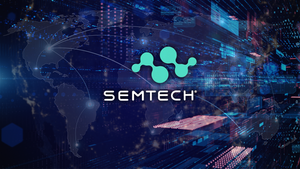
CoreWeave's unwavering commitment to its $9 billion all-stock acquisition of Core Scientific (NASDAQ: CORZ) has sent ripples through the financial markets, as CEO Michael Intrator publicly declared no intentions to alter the offer, despite significant dissent from Core Scientific shareholders. This steadfast position sets the stage for a contentious shareholder vote on October 30, with the future of one of the largest data center and crypto mining operators hanging in the balance.
The proposed acquisition, valued at approximately $9 billion, aims to integrate Core Scientific's extensive data center infrastructure into CoreWeave's burgeoning AI computing empire. While CoreWeave touts the deal as a strategic masterstroke designed to secure critical infrastructure for its high-performance computing (HPC) and AI workloads, a vocal segment of Core Scientific shareholders views the offer as a substantial undervaluation of their company and a flawed process lacking proper market exploration. The immediate implication is a looming showdown, where the outcome will not only determine Core Scientific's trajectory but also signal the market's appetite for aggressive, all-stock consolidations in the rapidly expanding AI infrastructure sector.
A Battle for Valuation: CoreWeave's Strategic Play Meets Shareholder Resistance
CoreWeave's pursuit of Core Scientific is a bold move to vertically integrate its operations and secure vital data center capacity. The offer, which would see Core Scientific shareholders receive 0.1235 newly issued shares of CoreWeave Class A common stock for each Core Scientific share they own, is designed to give CoreWeave control over 1.3 gigawatts of gross power across Core Scientific's national footprint, with an additional 1 GW+ available for expansion. CoreWeave projects this integration will eliminate over $10 billion in future lease obligations and generate an estimated $500 million in annual cost savings by the end of 2027, significantly enhancing operating efficiency and de-risking future expansion plans for its AI infrastructure. The strategic intent is clear: repurpose Core Scientific's existing crypto mining infrastructure for the more lucrative and rapidly growing HPC and AI workloads, with a potential divestment of the crypto mining business in the long term.
However, this strategic vision has met with fierce opposition from Core Scientific's shareholder base. The investment firm Two Seas Capital LP, a significant active shareholder, has been particularly vocal, urging other shareholders to vote against the transaction. Their primary concern centers on the perceived undervaluation of Core Scientific, with some investors reportedly believing the company's value is closer to $25 per share, which would push the deal's valuation to approximately $11.5 billion—a significant premium over the current $9 billion offer. The announcement of the deal saw Core Scientific's stock plunge 18%, a reaction Two Seas Capital described as "one of the worst one-day price declines for an M&A target this century."
Beyond the valuation, shareholders are wary of the all-stock nature of the deal, which exposes them to the inherent volatility of CoreWeave's stock. With Core Scientific shareholders expected to hold less than 10% of the combined company, there are concerns about dilution of ownership and the loss of Core Scientific's standalone potential, particularly given its strong market performance in the six months prior to the deal and its strategic position to capitalize on the surging demand for high-performance computing infrastructure. Furthermore, criticisms have been leveled at the "flawed process" of the deal, with accusations that Core Scientific's board agreed to the sale without adequately exploring other potential buyers. Law firms have also initiated investigations to determine if the proposed exchange ratio adequately values Core Scientific or if it indeed undervalues the company, adding another layer of scrutiny to the ongoing saga.
The Stakes: Winners, Losers, and a Transformed Landscape
The acquisition of Core Scientific (NASDAQ: CORZ) by CoreWeave carries profound implications for both companies and their respective shareholders, painting a clear picture of potential winners and a deeply concerned segment of losers. For CoreWeave, this deal represents a monumental strategic victory, solidifying its position as a dominant force in the rapidly expanding AI infrastructure market. By gaining direct ownership of Core Scientific's vast data center footprint, including 1.3 gigawatts of gross power and an additional 1 GW+ of future capacity, CoreWeave effectively bypasses the critical bottleneck of power and physical infrastructure that plagues many AI hyperscalers. The projected elimination of over $10 billion in future lease payments and an estimated $500 million in annual cost savings by the end of 2027 underscore the financial benefits and enhanced operational efficiency CoreWeave stands to gain. This vertical integration de-risks its future expansion, provides greater control over its supply chain, and offers enhanced financial flexibility, ultimately benefiting CoreWeave shareholders through sustained growth and improved profitability. While existing CoreWeave shareholders will experience some dilution due to the all-stock nature of the deal, the long-term strategic advantages are expected to outweigh this initial impact.
Conversely, for Core Scientific, the acquisition marks a definitive end to its standalone public company status and a complete transformation of its business model. While Core Scientific's CEO, Adam Sullivan, has framed the agreement as a way to advance AI infrastructure and maximize shareholder value through participation in the combined entity, the sentiment among a significant portion of its shareholders tells a different story. These shareholders, particularly those led by Two Seas Capital, feel that the company is being materially undervalued, with the $9 billion offer falling short of Core Scientific's true potential, especially given its strategic pivot towards high-performance computing (HPC) and its significant scale and access to low-cost power.
The all-stock deal is a double-edged sword for Core Scientific shareholders. While it offers a premium of approximately 66% to the unaffected closing share price prior to the announcement, the value is tied directly to the future performance and volatility of CoreWeave's stock. The immediate 13-18% drop in Core Scientific's stock price post-announcement, coupled with a 30% decline in CoreWeave's stock after the deal was made public, highlights the inherent risks and concerns regarding the actual value shareholders will receive at closing. With Core Scientific shareholders expected to own less than 10% of the combined entity, their influence and proportional ownership will be significantly diminished. This has led to accusations of a "flawed process" and a lack of exploration of other potential buyers, leaving many Core Scientific investors feeling that their standalone future, with its unique assets and market position, is being prematurely cut short for an inadequate price.
Broader Horizons: AI's Infrastructure Race and Market Repercussions
The proposed acquisition of Core Scientific (NASDAQ: CORZ) by CoreWeave for $9 billion is more than just a corporate takeover; it's a potent symbol of the fierce competition and escalating demand for foundational infrastructure in the age of artificial intelligence. This all-stock deal, expected to close in the fourth quarter of 2025, underscores a critical broader industry trend: the insatiable appetite for high-performance computing (HPC) resources, particularly Graphics Processing Units (GPUs), which are now considered the "new oil" of the digital economy. CoreWeave, a specialized "neocloud" provider focused on GPU-centric platforms for AI workloads, is making a definitive move to secure its supply chain, transitioning from merely procuring GPUs to owning the physical data center infrastructure and power capacity. This vertical integration is a strategic imperative in an industry where bottlenecks in power, cooling, and physical space can severely impede AI development and deployment.
The ripple effects of such a significant consolidation are poised to reverberate across the entire tech ecosystem. For NVIDIA (NASDAQ: NVDA), a key partner and investor in CoreWeave, the acquisition strengthens a crucial channel for its GPUs to reach AI innovators. CoreWeave's expansion directly fuels NVIDIA's hardware sales, cementing its dominance in the AI chip market. However, it also highlights NVIDIA's own strategic balancing act, as it reportedly plans a massive $100 billion investment with OpenAI to build 10 GW of AI data centers, potentially bringing it into more direct competition with its partners.
The major hyperscalers—Microsoft (NASDAQ: MSFT), Amazon (NASDAQ: AMZN), and Google (NASDAQ: GOOGL)—will undoubtedly face intensified competition. CoreWeave has already demonstrated its ability to secure multi-billion dollar contracts with tech giants like Microsoft, OpenAI, and Meta, proving its efficacy in attracting clients traditionally served by the larger cloud providers. This forces hyperscalers to accelerate their own infrastructure spending arms race, investing heavily in custom chip development, expanding data center capacity, and diversifying their AI service portfolios to maintain their competitive edge. While large tech firms may increase their proprietary data center investments, the sheer cost and complexity mean specialized providers like CoreWeave will continue to play a significant role in meeting the diverse demands of the AI industry.
Beyond market dynamics, the scale of this acquisition and the broader trends in AI infrastructure are attracting heightened regulatory scrutiny. Governments worldwide are increasingly examining large tech acquisitions for potential anti-competitive effects, especially in critical sectors like AI infrastructure. The close ties between NVIDIA, OpenAI, and CoreWeave could raise antitrust questions regarding market concentration and fair competition. Furthermore, data centers are now recognized as critical infrastructure, bringing national security considerations into play, particularly concerning foreign investment and data sovereignty. The massive energy consumption of AI data centers is also a growing environmental concern, leading to calls for stricter regulations on energy efficiency, emissions standards, and renewable energy commitments, which will undoubtedly influence future data center development and M&A activity. Historically, large, strategic acquisitions in rapidly evolving tech sectors, such as Oracle's acquisition of PeopleSoft or Microsoft's acquisition of Activision Blizzard, have frequently faced intense scrutiny from shareholders, competitors, and regulators, underscoring the complex landscape CoreWeave and Core Scientific are navigating.
What Comes Next: Navigating the AI Infrastructure Frontier
The path forward for CoreWeave and Core Scientific, and indeed the broader AI infrastructure market, hinges significantly on the outcome of the impending shareholder vote. If the $9 billion all-stock acquisition proceeds as CoreWeave's CEO intends, the short-term outlook for CoreWeave involves a period of intense integration and optimization. The immediate gain of 1.3 gigawatts of power capacity and an additional 1 GW+ for expansion will enable CoreWeave to rapidly scale its AI compute offerings, directly addressing the insatiable demand for GPUs. The projected $500 million in annual cost savings by the end of 2027 and the elimination of over $10 billion in future lease obligations represent substantial financial advantages. CoreWeave will embark on the strategic pivot of repurposing Core Scientific's Bitcoin mining infrastructure for high-density AI workloads, a complex but critical task. For Core Scientific shareholders, the short-term entails receiving CoreWeave Class A common stock, effectively transitioning their investment into a leading AI hyperscaler, albeit with the inherent volatility of CoreWeave's valuation and a reduced ownership stake.
Looking further ahead, the long-term possibilities for a combined CoreWeave are immense. The acquisition solidifies its position as a dominant, purpose-built AI hyperscaler with a robust, self-owned data center footprint. This vertical integration provides a crucial competitive edge, allowing CoreWeave to accelerate its expansion across North America and Europe, and further diversify its offerings in bare-metal cloud and container orchestration. The company will continue to leverage its strong partnerships with AI giants like NVIDIA (NASDAQ: NVDA), Microsoft (NASDAQ: MSFT), Meta (NASDAQ: META), and OpenAI. Strategic pivots will include seamlessly integrating diverse infrastructure, streamlining operational processes, and effectively managing a significantly larger physical footprint. CoreWeave also faces the challenge of clearly defining its strategy for Core Scientific's remaining Bitcoin mining operations, whether through divestment or phased repurposing.
Market opportunities are abundant in the explosively growing AI infrastructure sector, projected to surpass $200 billion by 2028. CoreWeave, with its secured GPU supply through NVIDIA and its vertically integrated data centers, is strategically positioned to capitalize on this boom. The focus on energy efficiency and low-cost power from Core Scientific's assets can also be a key differentiator. However, significant challenges persist. CoreWeave's business model remains highly capital-intensive, requiring massive investments in GPUs and data centers, which could pressure its valuation. Customer concentration, intense competition from established hyperscalers, the rapid evolution of AI hardware, and ongoing regulatory and geopolitical risks are all factors that could influence its trajectory.
Should the deal succeed, the most likely scenario is CoreWeave accelerating its AI market leadership, successfully integrating Core Scientific's assets, and solidifying its position as a dominant AI cloud provider. This could lead to sustained revenue growth and increased profitability. However, an alternative scenario involves integration headwinds, where unforeseen challenges in retrofitting facilities or achieving projected synergies lead to higher costs and operational inefficiencies, causing short-to-medium-term financial volatility. If the deal were to fail, Core Scientific would likely continue its independent AI pivot, facing the significant capital requirements and intense competition of building AI infrastructure without CoreWeave's backing. CoreWeave, in turn, would pursue alternative expansion avenues, potentially at a slower pace or higher cost.
A New Era for AI Infrastructure: Key Takeaways and Investor Outlook
The proposed acquisition of Core Scientific (NASDAQ: CORZ) by CoreWeave marks a pivotal moment in the race to build the foundational infrastructure for artificial intelligence. The key takeaway is CoreWeave's aggressive move towards vertical integration, securing critical data center capacity and power to fuel its GPU-centric cloud services. This strategy reflects the broader industry trend of an insatiable demand for AI compute and the scarcity of suitable infrastructure. While CoreWeave anticipates significant cost savings and operational efficiencies, the deal has been met with considerable shareholder concern from Core Scientific, primarily regarding valuation and the all-stock nature of the offer.
Moving forward, the market will closely watch the integration process and CoreWeave's ability to effectively repurpose Core Scientific's assets for AI workloads. The success of this acquisition could set a precedent for future consolidations in the AI infrastructure space, as companies vie for control over essential resources. For investors, the event highlights the high-stakes, high-reward nature of the AI market. CoreWeave's trajectory post-acquisition will offer insights into the viability of specialized AI cloud providers against established hyperscalers.
In the coming months, investors should monitor several critical factors: the outcome of the Core Scientific shareholder vote, any further regulatory scrutiny, the pace and success of asset integration, and CoreWeave's ability to deliver on its projected cost savings and capacity expansion. The financial performance of the combined entity, particularly its revenue growth from AI workloads and its ability to manage capital expenditures, will be crucial indicators. This acquisition underscores that the AI revolution is not just about algorithms and models, but fundamentally about the physical infrastructure that powers them, making control over data centers and power a strategic imperative for market leadership.
This content is intended for informational purposes only and is not financial advice





